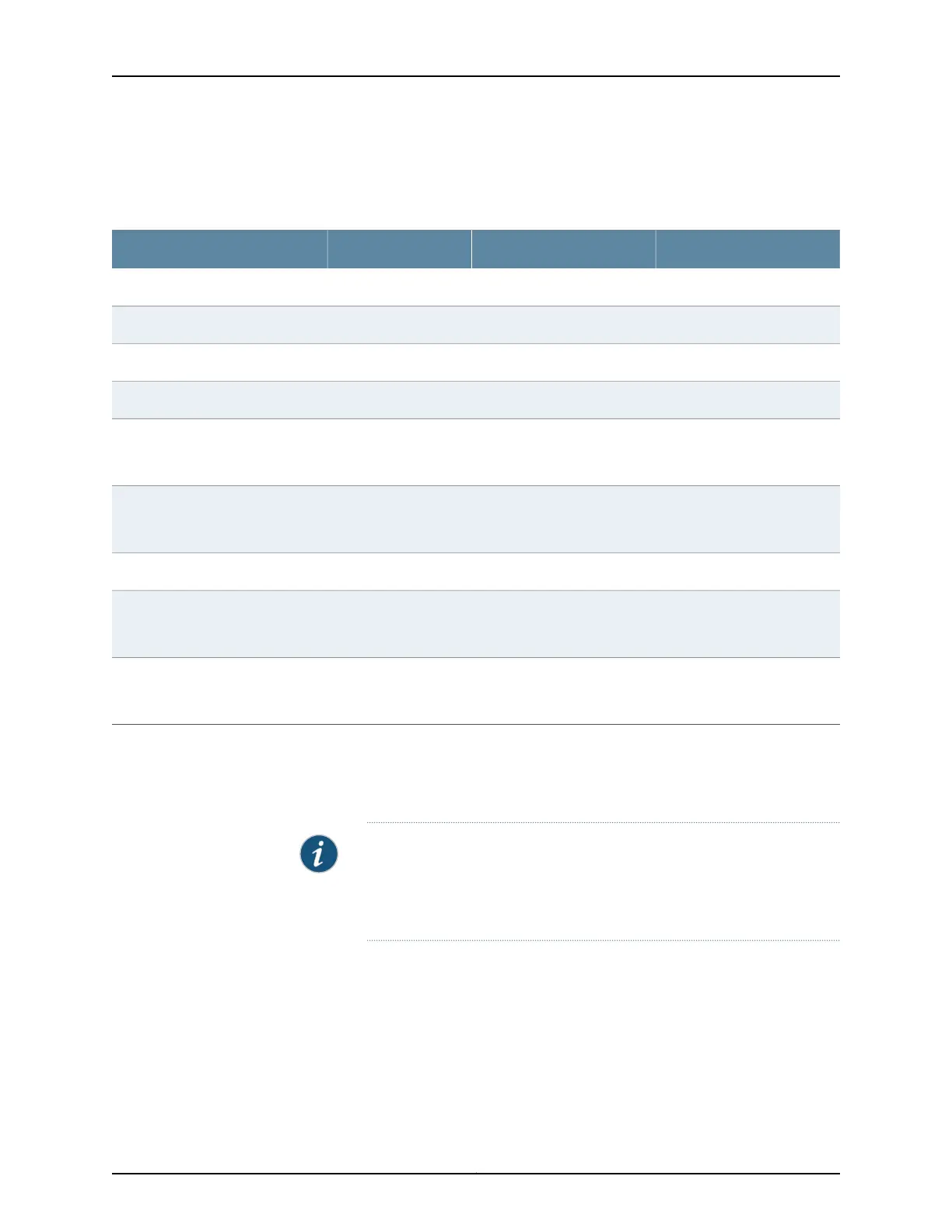1. Calculate the power requirements (usage) using the values in “Power Requirements
for an MX480 Router” on page 140 as shown in Table 81 on page 151.
Table 81: Sample Power Requirements for an MX480 Router
ZonePower RequirementPart NumberChassis Component
Zone 0 and Zone 140 WMX480BASE-DC-HIGHBase system
Zone 0 and Zone 1160 WFFANTRAY-MX480-HCHigh-capacity cooling system
Zone 1440 WMPC-3D-16XGE-SFPP-R-BMPC - Slot 2
Zone 0440 WMPC-3D-16XGE-SFPP-R-BMPC - Slot 1
Zone 0185 W
90 W
SCBE2-MX with
RE-S-1800X2-8G
SCB 1
Zone 0185 W
90 W
SCBE2 with
RE-S-1800X2-8G
SCB 0
Zone 1310 WDPCE-R-4XGE-XFPDPC - Slot 3
1090 W
850 W
Zone 0 total output power
Zone 1 total output power
1010 W
770 W
Zone 0 total output power (excluding cooling system)
Zone 1 total output power (excluding cooling system)
2. Evaluate the power budget. In the case of a DC-powered chassis, evaluate the budget
for each zone. In this step, we check the required power against the maximum output
power of available power supply options.
NOTE: The power for the cooling system comes from a different tap on
the powersupply, reserved forthe coolingsystem only. Thecooling system
power requirement does not need to be deducted from the output power
budget of the power supply.
Table 82 on page 152 lists the power supplies, their maximum output power, and
unused power (or a power deficit) for MX480 AC chassis.Table 83 on page 152 lists
the power supplies, their maximum output power, and unused power (or a power
deficit) for MX480 DC chassis. See “AC Electrical Specifications for the MX480 Router”
on page 139 and “DC Power Supply Electrical Specifications for the MX480 Router”
on page 157 for more information about the MX480 power supply electrical
specifications.
151Copyright © 2017, Juniper Networks, Inc.
Chapter 12: AC Power Requirements, Specifications, and Guidelines
